
Only very tame pet hens enjoy being picked up. Most chickens find the whole procedure stressful, so you should only catch or handle them if you have to.
There are a few reasons why you might need to know how to catch a chicken. Your hens might be in danger, might require a clean-up after coming into contact with something oily or sticky, or you might need to carry out a chicken health check.
There are various ways to catch a chicken. If the hen is in danger as a result of escaping onto a road or into a garden with a dog in it, you can usually manage things by ‘herding’ the chicken rather than trying to lift it. If a dog is the problem, controlling or confining the dog is the first thing to sort out. If the hen has escaped and you need to catch her, guiding her back to safety by standing with your arms stretched out to the sides and encouraging her to return to the chicken coop is the best option. In these situations, the chicken will desperately want to find her fellow hens, so ‘steer’ her towards the hole in the fence or the open gate, or whichever escape route she took.
If the hen has flapped over a wall, however, you may have to resort to old fashioned hunting techniques for catching chickens.
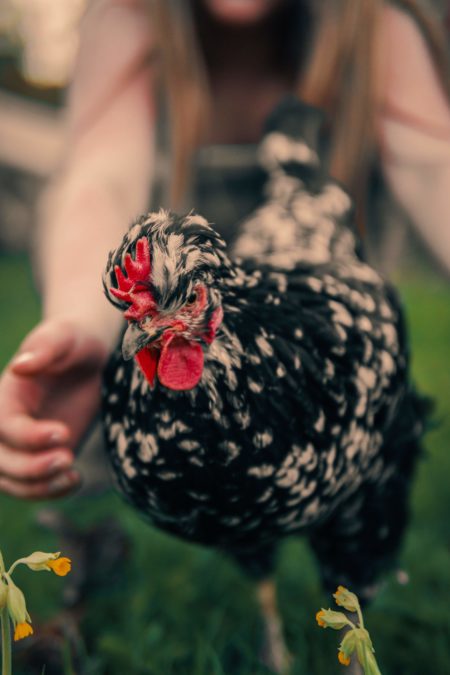 How Do You Catch a Stray Chicken?
How Do You Catch a Stray Chicken?
If your hens are very tame, you can simply offer some treats, bend down and pick them up. If only it were that easy with every chicken! Some are about as easy to catch as a fast-moving bar of wet soap – they can sprint at speeds of around 9 miles (14.5 km) per hour – and you will usually have to corner them first if you want to catch them.
If a hen has escaped or you spot her running away, or simply hidden somewhere in a large garden or meadow where you can find to trace of her, the best approach is to be patient and rely on the chicken’s homing instinct. As dusk begins to fall, the hen will instinctively head back to the coop. This is one of the handy things about keeping poultry!
The Best Way to Catch a Chicken
Do chickens like being picked up? In general, the answer is no. But if you’re trying to catch a chicken for whatever reason there are various ways of doing so. Not all of them can be recommended for the non-expert chicken keeper.
- Using a pole with a hook or noose for catching a chicken. Let’s get the dangerous one out of the way first. A pole, hook or noose should only be used by experts when trying to catch a chicken. This is a dangerous tool, and in the wrong hands the poultry hook or noose can break a chicken’s leg or neck as you try to grab it, so our advice is to avoid it.
- Using a net to catch chickens. Nets can be dangerous tools, as a chicken’s claws can snag in the netting, causing injury. If you opt for this method, the chickens should be netted as quickly as possible to minimise stress – although forever afterwards the sight of that net will send the poor hen into a panic! You should always use as large a net as possible for catching your chickens. A blanket may offer a safer way to catch them.
- Using crate traps for catching chickens. Putting irresistible treats into a crate, and then slyly closing the door with a pole or long stick is an effective method. The main drawback is that all the other chickens will be tempted to take a look inside too!
- Boxes for catching chickens. A large box can be placed over a cornered bird in the coop or run, and the flaps can be tucked in to secure the chicken. This technique can be useful if you need to capture chickens in daylight (although it works at night, too) and if they tend to be aggressive.
- Torchlight makes chickens easier to catch. This is the simplest and most effective method when you need to trap a roosting chicken. When chickens are with the rest of the flock in the coop or run on their roosting bars or perches or in their nesting boxes at night, they instinctively stay put. If you open the top of the coop and shine a torch in (head-mounted ones are perfect), you’ll be able to pinpoint the hen you need to examine, and grab her up with minimal fuss.
Picking Up the Chicken
When picking up the hen, try to be firm but not rough. Getting a good grip and preventing the wings from flapping is the key. The correct method is to hold the chicken by placing your hand over its back, confining the wings, and then bring it close to your body. If the bird is very nervous, you may have to cover her with a towel to calm her down.
A tame hen is the easiest type of chicken to capture. Simply lure the hen in with a few treats, and grab her, stroking her back to reassure her. Once the cleaning or the examination is over, put the chicken on the ground and step back. She will do the rest, scuttling back to the safety of the flock.
So, there are several ways to catch a chicken, but you should only put them into operation when you definitely need to catch one. Try to avoid the poultry hook or net if you can, and use the method that suits both the chicken and the circumstances.
This entry was posted in Chickens on November 24th, 2020 by alisa.deluca

In many ways dogs age in similar ways to humans. Older dogs have less energy, lose some of their senses, experience changes in sleeping and eating patterns, go grey and can have trouble remembering the most ordinary things.
Additionally, muscles and bones become weaker, and the immune system is not as good at fighting off infections. Internal organs also get more tired, so the dog is more prone to liver, heart and kidney disease.
This may seem rather gloomy and depressing, but it’s just a part of nature we have to accept, and as long as you as an owner continue to care for your dog in an appropriate way as they get older, you can really enjoy the last golden years together.
What counts as a senior dog?
Not all dogs reach old age at the same time. Just as with humans, some dogs seem a lot younger or older than their actual age, and genetics play a part in the risk of developing diseases and problems with hearing and sight.
But the most important thing when figuring out when your dog will be a senior is size. Toy dogs, terriers and other small breeds are seen as old when they are 10-11 years, medium-sized breeds like retrievers are considered seniors when they are 8-10 years, and large and giant breeds reach old age at 5 or 6.
 What can I do to help my dog in old age?
What can I do to help my dog in old age?
Your dog will still need regular exercise, even if it might look a bit different from when they were young and bouncy. Accept that the dog won’t be able to come on the long walks they used to love, and try exercising for shorter periods of time more often. Remember to also stimulate your elderly dog mentally. Food toys and puzzles will be great for keeping your dog’s brain sharp.
Older dogs that don’t move around as they once did run the risk of excessive weight gain, and their diet will need to be adjusted to fit their new energy levels. Ask your vet for advice on what to feed your senior dog, but in general it’s good to choose a low fat feed and limit the amount of treats.
Make sure you take your dog to the vet for more regular check ups as he or she gets older. That way you will be able to spot potential problems early on. Dental hygiene is more important than ever, and it’s common that the skin gets drier and the coat less shiny, so it might be a good idea to do a bit more grooming.
Changing sleeping habits
Long gone are the puppy days when your dog passed out anywhere and slept for hours. Comfort is super important for older dogs, and their tired muscles and bones will need support.
Choose a dog bed that is designed to look after the dog’s body, ideally with a firm but supportive mattress and a soft cover. Omlet’s dog beds are great for senior dogs, not only because of the high performing memory foam mattress and supportive features, but also because they can be raised off the ground, making it much easier for an older and less agile dog to get in and out of the bed.
It’s also important to be aware that senior dogs often are much more sensitive to temperature changes. Place the dog’s bed somewhere that stays warm in winter and cool in summer, and provide them with an extra blanket in winter and maybe use a cooling mat in summer.
Making the right decisions at the end of life
There might come a time when you as an owner will have to make unpleasant decisions regarding your dog’s health and potentially whether or not your pet’s life is worth living.
If your dog develops an illness that can be treated, you will need to consider what the interventions will be like for the dog, what their quality of life will be after the treatment, and how long it may extend their life. If you have insurance, money hopefully doesn’t have to be a factor to consider, but many operations and treatments are extremely pricey and far from risk free.
Remember to try and put your own feelings to one side and concentrate on what is best for your dog. Although you might be able to get another few months together with your pet, he or she might be in constant pain, and will not be able to do all the things they used to love, and will not enjoy themselves.
Older pets can easily struggle with anxiety. Their body and mind are changing, and they can’t figure out why. Even if your dog might not be able to see or hear you as well as they used to, they can sense your presence, and that will make them calm and happy, so try to spend as much time together as possible. The last few years of your dog’s life can be a wonderful time for both of you, so don’t dwell on aging but take them for a walk, snuggle up with them on the sofa and play with them – just like you’ve always done!
This entry was posted in Dogs on November 18th, 2020 by linnearask

Moving house is stressful for everyone involved – and that includes pets and chickens. As far as your hens are concerned, the secret to a successful relocation is to have everything ready at the other end. In the same way as you might unpack a kettle and two mugs before opening any of the big boxes, the chicken shed and run should be ready in the garden before the first kettle boils!
Hens are prone to stress, and at the very least you can expect the egg count to plummet for a few days following a move. Weak or very nervous chickens are in particular danger, as panic can make them flap blindly and break legs, or even kill themselves. Minimising stress is therefore the key to a successful move.
The most stress-free way to get your hens ready for the move is to collect and crate/box them from the coop, rather than later in the day when they are out and about and need chasing and cornering. That is not a good way to minimise stress!
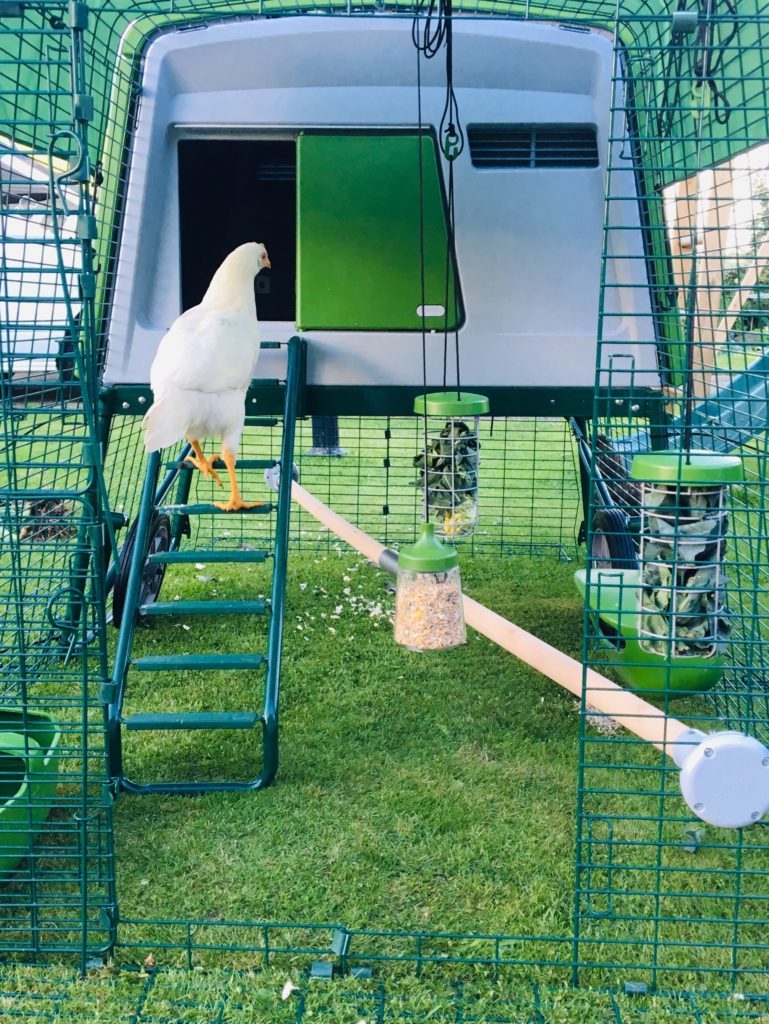 Transporting Chickens
Transporting Chickens
Your hen-carriers need to be covered, well-ventilated boxes or pet crates. They should have enough space for the birds to turn around in (to prevent them from panicking at the confined space), while being dark enough to make their instincts kick in and help them snuggle down for the duration of the trip. On longer journeys, however, you will need to have enough light in the boxes to enable the hens to feed, and pet crates will make this easier.
You’ll need one box per chicken, generally, so make sure you have enough boxes for the big day. Hens with similar, placid temperaments can be transported in a single box. Each box or crate should be lined with straw to soak up the droppings, and the boxes should be stacked securely, not more than three boxes high.
It’s important that the birds don’t get too hot on the journey, so ventilation is an issue. If you only have two or three hens, they could travel on the back seat of a well-ventilated car, secured with quilts or blankets – or even seatbelts – to prevent the boxes from sliding around.
The journey itself should be taken using as many straight, non-bumpy roads as possible, combined with the need to make the trip as brief as you can. If your new home is a short stretch of motorway and a couple of A-roads away, that’s all very straightforward. Rural locations with lots of windy-road options will need more planning. If all the roads are B-roads with lots of bends, the quickest route is the best option.
In the two weeks before the move, make sure your hens’ diet is rich in all the required vitamins and minerals. Some owners recommend adding probiotics or extra vitamins to the feed, and this is something you should discuss with your vet.
For short journeys, you will not have to worry about chicken feed. On longer trips, though, food will need to be provided. Make sure you take a long break at least every three hours, to allow the confined birds to settle down and feed. If you are transporting the hens in crates, you can attach a water dispenser to the side.
A Portable Chicken Coop?
Old fashioned chicken coops can be tricky to transport, and many hen keepers prefer to erect a new run and chicken shed at their new property. This sometimes involves housing the birds in temporary accommodation while the new coop and run are being sorted out.
There are ways of avoiding the inconvenience, though. A portable coop and run can be packed away and then installed in the new garden in a few minutes, and they have the advantage of familiarity. Hens introduced into a coop that they already know inside out will reduce the stress of the move enormously.
Coops and runs such as the Eglu are ideal in this respect. Placing the coop in your new garden as soon as you arrive will enable the chickens to feel at home before you’ve even managed to open any of your removal boxes. Human will inevitably feel the stress of the moving-in process, but the hens don’t have to!
The process isn’t quite over when your hens are safely cooped up in the new garden. Stress can cause any underlying diseases to bloom, so you need to carry out daily health checks on your birds as the flock settles down in its new surroundings. This is yet another reason to consider a pack-and-go portable coop and run.
This entry was posted in Chickens on November 17th, 2020 by linnearask

As with all pets, you as the owner have the main responsibility for making sure the animals are safe and happy. That means that before you go away overnight, whether it’s for work or on holiday, you will need to make sure you have a plan for the chickens, ensuring they will be alright while you’re not around.
Chickens are much more self-sufficient than some other popular pets; they don’t need human interaction every day, will sort out their own exercise, and will not overeat even if there is more food than needed available. That being said though, there are lots of things to think about before you leave them alone.
How long can I leave my chickens alone for?
This is not an easy question to answer, as it depends heavily on your chickens, where you live, and what your setup looks like. Even leaving your flock of chickens for a day requires some preparation.
Hens need constant access to food and water, and enough space to move around on. This is relatively easy to organise if you’re going away for 2-3 days. The more important, and probably the trickier, thing to ensure is that the chickens are safe from predators when you are not there to keep an eye on them. Letting your chickens free range without any supervision is very risky, so you will need to have a safe enclosure that is big enough for your chickens to move around on.
An Eglu Cube connected to a Walk in run is a perfect setup for all chicken keeping situations, but maybe particularly when you’re not able to keep a constant eye on your hens. The Walk in run can be extended to suit the number of chickens you have, and you can be sure that they won’t have to fend off any foxes or wild birds.
If you are confident your enclosure is safe and spacious enough, and that there is no risk that the chickens will run out of food and water, most flocks will be alright by themselves for a weekend.
 Should I get a chicken sitter?
Should I get a chicken sitter?
If you’re going away for anything longer than three days, you will need to organise for someone to help you come and check on and take care of your chickens on a daily basis. Even if you’re just gone for one night, we would recommend asking a friendly neighbour to poke their head over the fence to make sure the hens are well.
Accidents happen: one of your chickens could have had a fall and seems to be in pain, or a water container may have fallen over. Your friend or neighbour will then hopefully be able to refill the water or give you a call to let you know what has happened.
You might be surprised at how many of your friends and family will be happy to go and check on your chickens once a day if they get to keep the delicious fresh eggs. If you have an automatic door that lets your chickens out in the morning and shuts behind them at night, your helpers can decide for themselves at what time of the day they would like to go.
If you are getting someone to look after your chickens for you, it’s nice to make it as easy as possible for them before you leave home.
What do my chickens need while I’m away?
If you have decided you feel confident that your chickens will be okay by themselves for a few days you will probably already have thought about these things, but they are still worth mentioning:
Food and water
You probably have quite a good idea of how much your chickens eat and drink in a day, it all depends on breed, age and size. It’s always better to leave a bit too much food than too little, and make sure you have more than one feeder to choose from in case something were to happen to one of them.
Prep for different weathers
Don’t trust the weather forecast completely. Make sure the chickens can return to the coop and that they have sheltered spots on the run in case of all day rain or a particularly scorching sunny day.
Entertainment
If your chickens are used to you coming to hang out with them after work every day they might miss the fun. Try to make up for this by giving them some fun toys to play with on the run. Some chickens absolutely love perching on the Chicken Swing, whereas others will go crazy for food dispensing toys, like the Caddi Treat Holder or Peck Toys.
This entry was posted in Chickens on November 11th, 2020 by linnearask
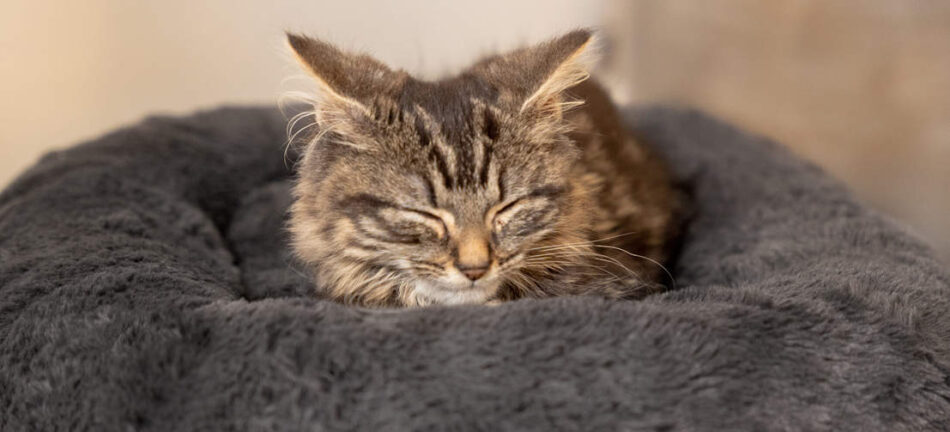
You’ve had a hectic week at work and now the car’s broken down. Sound stressful? It’s only human to let things get the better of us sometimes, and in times of trouble, we often turn to our four-legged companions to calm us down. Cats always manage to find a way to help us relax and give us something else to focus on for a moment. But do you ever think about what might potentially make them stressed? Stress is not an uncommon problem with cats. They can be anxious animals that don’t deal well with change, so there are lots of factors that might make your pet stressed. It’s not always easy to spot signs of stress, or to combat them, but it’s important to try, as chronic stress can lead to health and behavioural problems in felines.
4 common causes of stress in cats
An illness or physical trauma that requires treatment or medication will very likely make your cat feel worried. Apart from the potential pain or discomfort, the cat might also have to take pills or wear a cone, which limits their agility and freedom. Being in heat, or your cat being pregnant, will unsurprisingly make most female cats feel on edge, and it is very difficult to tell them what’s happening to their bodies. Apart from more medical conditions, grooming-related changes like having a bath or getting a haircut can sometimes cause stress in your cat.
The big ones here are moving to a new house, or spending time away from the home, like in a kennel or on holiday. Cats prefer the safety of what they know, and will most likely not enjoy traveling anywhere.
Extreme weather and seasonal changes can make cats worried and stressed, as can a lack of stimulation in their current living space. Outdoor cats who for some reason have been limited to the house will for example often develop stress-related symptoms. Another common environmental stress factor for cats is the presence of other pets, including another cat. If you’re considering adding a new feline addition to the family, first, find out how your cats can live in harmony.
Anyone unfamiliar to your cat coming into the household can be seen as a threat. Whether they’re guests who are just over for dinner or new housemates moving into the spare bedroom, this can make your pet anxious. A new baby in the house can be stressful for everyone involved – two and four-legged family members alike. This isn’t to say that cats and children cannot get along great, but what’s important is that boundaries are respected. The Maya Indoor cat house from Omlet is the ideal spot for a kitty escape, which can be placed out of reach from any disturbances. The super soft Omlet Maya Donut cat bed slots in perfectly to the cat house, too, making their hideaway the ultimate spot for catching up on cat naps.
Litter tray and diet factors
Changing your cat’s brand or type of litter or food can also make your cat stressed. If you plan on switching your cat’s litter, this should be done over a gradual period of time, mixing the new litter, with the old. A new litter box can also be anxiety-inducing, as can an unusually dirty tray or lack of food and water.
What can stress do to a cat?
Bursts of stress, fear or anxiety are normal and harmless, but it’s prolonged, chronic stress that can be dangerous. Like in humans, longer periods of stress are associated with depression and a weakened immune system. In cats, stress is also believed to cause or trigger conditions like feline asthma. Stress can also cause many behavioral problems such as aggression and litter tray avoidance.
How can I tell if my cat is stressed?
First of all, it’s worth noting that a cat that seems worried by a barking dog outside the window or the sudden noise of something dropping on the floor is completely normal. It’s when your cat is on constant high alert, that you should consider stress management solutions. Here’s what to look out for:
Physical symptoms of stress include, but are not limited to:
- Vomiting and diarrhoea
- Excessive shedding and/or grooming
- Changes in eating and sleeping patterns
- Lethargy
Behavioral symptoms of stress include, but are not limited to:
- Significant changes in routines or behaviour
- Urinating outside the litter tray and spraying on furniture
- Unexpected aggression towards humans or other pets
- Disinterest in things going on around them
- Excessive meowing
- Hiding for long periods of time
If you notice a change in your cat’s behaviour or physical appearance, the first thing you should do is take them to the vet to rule out any possible medical condition that could be causing the symptoms. Stress can in itself be a symptom of some diseases and illnesses, but the vet will be able to give you the best advice for your cat specifically.
What can I do to help my cat?
The most important thing to do is to try and find the source of the stress. Observe your cat’s behaviour in different situations to try and see if there are any triggers. Once you think you have located the reason/s your cat feels stressed, it’s time to solve the problem.
Offer a safe space
Firstly, make sure your cat has a safe space they can retreat to when they feel stressed or anxious. It should be a room free from disturbances, where you can place a cat den like the Maya Indoor cat house. It’s important that everyone in the family, children included, knows not to disrupt the cat when they’re in their safe space to make sure they’re able to fully relax.
Social interaction
Spending time with your cat is a good way of providing stimulation for your cat. It also means social interaction for both you and your feline friend, which is great for dealing with stress. It can be chasing after a catnip toy, watching them use their cat scratching post or just relaxing on the sofa – let your cat decide.
Look after yourself
Another thing to consider is that our pets are highly affected by our well-being. If you feel stressed, your cat is more likely to feel stressed, and if you’re relaxed they’re more likely to not see everything around them as a threat. It’s easier said than done to stop feeling a certain way, but perhaps the knowledge that your pet’s mental health could be affected, can inspire you to find new ways of managing your own stress.
Omlet and your cat’s well-being
At Omlet, we expertly design products to put your pets’ well-being first. From the Maya Indoor cat house to Stak cat scratcher, our designers know what both cats and owners need to live a harmonious and stress-free life.
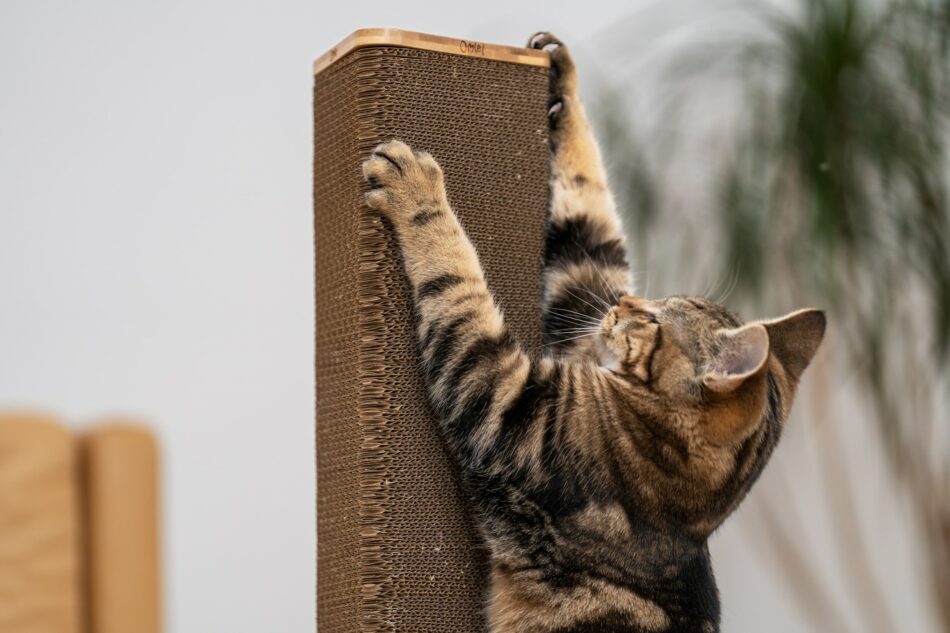
This entry was posted in Cats on November 4th, 2020 by linnearask
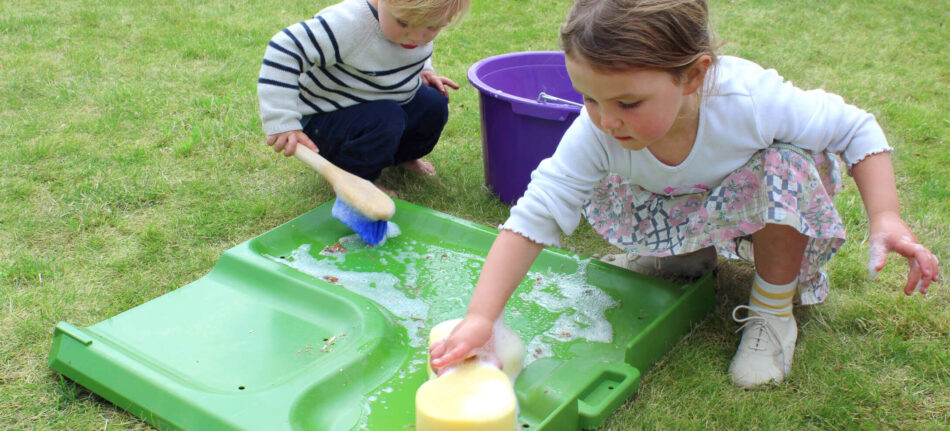
It’s red, it looks like a spider, it lives in huge colonies, and it creeps out at night to suck your chickens’ blood. As nightmares go, this one’s pretty alarming – until you realise that it’s one that you can easily wake up from. The creature in question – the Red Mite – is less than a millimetre long, and it’s not difficult to banish from your chicken coop.
The Red Mite is able to live – and feed – on a variety of hosts, including humans, given half a chance. But it is it’s fondness for wild birds that brings it into contact with one of its favourite targets – your chickens. If there are birds in your backyard, there are probably Red Mites too.
Know Your Enemy
The Red Mite, Dermanyssus gallinae, is a parasite that hides in dark corners of the chicken shed and scuttles out at night in huge numbers to suck blood. When fully grown, they are about 0.75mm, with spider-like legs. Before feeding, the mites are greyish-brown rather than red – the colouring comes from the blood they suck. Once engorged, the mites scurry away back to their hiding places. They are patient, too, and have been known to survive for up to 10 months in empty chicken sheds.
Infested hens will eventually develop scabs and wounds, suffer from anaemia (caused by blood loss and manifesting in pale wattles and combs), and may begin to lose feathers. Egg production will plummet, too. If the hens are young, in severe cases the blood loss and physical shock can prove fatal. One of the problems of diagnosis is that the mites are often in hiding when you examine the bird, rather than sitting in plain view (like a louse or flea, for example). These physical signs in the bird should prompt you into action though, and checking the mites’ potential hiding places is straightforward.
If the mites appear to be living on your chickens full time, rather than disappearing in the day, you might have an outbreak of Northern Fowl Mite. Same issues, different beast – and the advice given in this article applies to these bloodsuckers too.
How to be Mightier than the Mite
Because they normally feed at night, you may not spot the mites at first. You can, however, look for their hiding places. Corners and crevices in wooden henhouses are a favourite, and under roosting perches. Once discovered, you need to zap the mini vampires with a hen-friendly anti-mite liquid or powder. There are two types of product aimed at eliminating the beasties – ones that you spray or dust on the hen house and its fittings, and another that you apply directly to the birds.
All bedding should be removed from an infested coop, and the whole structure should be washed with hot water – a power-hose is a good weapon in this battle – before being treated with an anti-mite preparation.
Once the mites have been banished, prevention is the best way of keeping control of the situation. Regular washing of the chicken shed and any other concrete, plastic or wooden areas of the chicken run will help. This is particularly important in the warmer summer months, when the mite population tends to boom.
Some chicken breeders have reported good anti-mite effects from carbon dioxide, either in the form of a ‘dry ice’ fumigation or direct spraying, but there is not yet any formal veterinary rubber-stamping of these procedures.
Another fool-proof way of banishing Red Mite is to keep your hens in a coop that doesn’t have lots of corners, nooks and crannies – i.e. something plastic rather than wooden. Plastic chicken sheds are easier to clean and keep hygienic, and the Queen of Coops is the Eglu.
So, you can’t keep the wild birds and their mites away, but you can easily stop them regaining a hold amongst your flock. Once the nightmare is banished, both you and your hens can sleep easy at night.
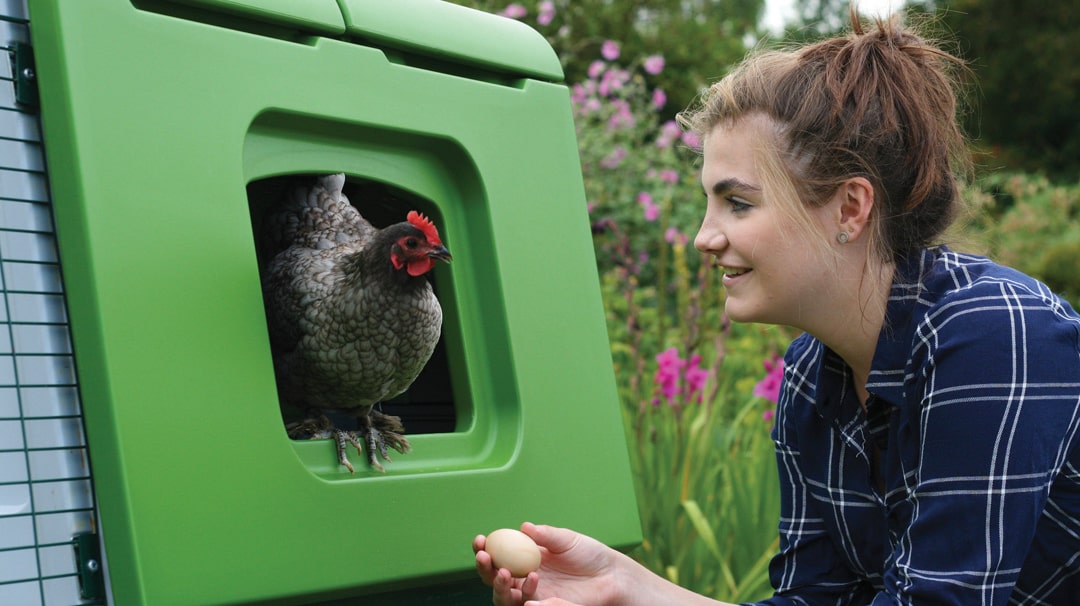
This entry was posted in Chickens on November 2nd, 2020 by linnearask

 How Do You Catch a Stray Chicken?
How Do You Catch a Stray Chicken?
 What can I do to help my dog in old age?
What can I do to help my dog in old age? 
 Transporting Chickens
Transporting Chickens
 Should I get a chicken sitter?
Should I get a chicken sitter?


